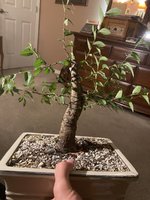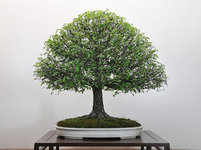Michael_Marinelli
Yamadori
Hi all.
I’m stumped about how to choose which branches to keep on this chinese elm tree (and really any tree in general). How do you choose which branches to keep vs cut off? How do I choose a 1st vs 2nd vs back branch and so on??
I’ve read that there are some guidelines to follow with informal upright, but the natural growth of many trees prevents perfect following of these guidelines. How do you guys work your way around this?
I’m trying to not make mistakes I’ll regret later on this tree. It’s pretty good material IMO.
First pic is front and second is back. (don’t mind my newbie wiring).


I’m stumped about how to choose which branches to keep on this chinese elm tree (and really any tree in general). How do you choose which branches to keep vs cut off? How do I choose a 1st vs 2nd vs back branch and so on??
I’ve read that there are some guidelines to follow with informal upright, but the natural growth of many trees prevents perfect following of these guidelines. How do you guys work your way around this?
I’m trying to not make mistakes I’ll regret later on this tree. It’s pretty good material IMO.
First pic is front and second is back. (don’t mind my newbie wiring).





